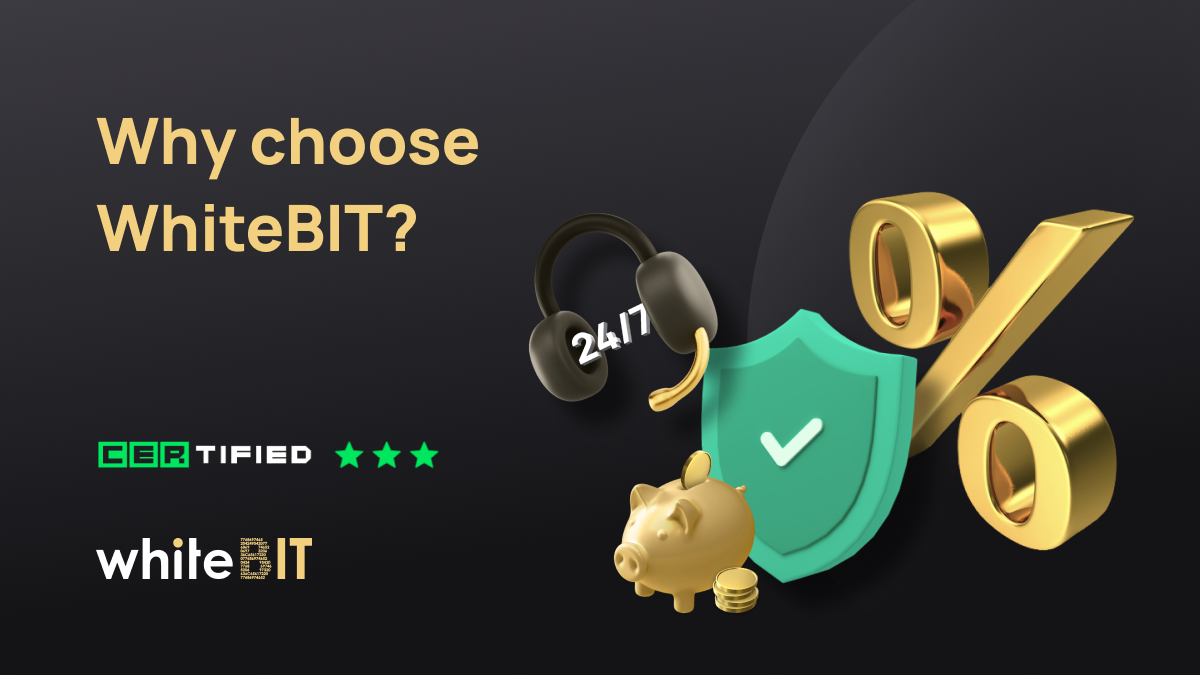What Is Market Cap in Crypto?

Content
Before investing in cryptocurrency, you must analyze the market (DYOR) and assess current trends and potential risks. This must be challenging because every coin and token seeks to attract the attention of investors. Crypto-enthusiasts focus on various indicators, including trading volume, blockchain security level, development team, and community dynamics. Capitalization is one of the most critical indicators of a cryptocurrency’s stability.
What Does Market Cap Mean in Crypto?
Crypto market capitalization (MCAP) is a metric that estimates the total market value of a cryptocurrency asset or the cryptocurrency market as an entire. This value is not just limited to a single number representing the volume of a cryptocurrency or market. It is a critical analysis tool that helps investors and analysts assess the actual value of the asset, its prospects, and its market position. The cryptocurrencies market cap indicator also allows for comparing and evaluating the long-term growth potential of different cryptocurrencies, providing investors with data to make more informed investment decisions.
In addition, market capitalization categories divides by size: from large (highly capitalized) to medium and small. This distinction helps determine the level of risk and potential return on investment.
How Is Market Capitalization Calculated?
The cryptocurrency market capitalization is determined by multiplying the current coin price by the total number of coins in circulation. The market capitalization formula is:
MCAP = current price × number of tokens in circulation
For clarity, let’s look at the example of Bitcoin. The current price for 1 BTC = $70,500, with 19,666,425 BTC in circulation. Let’s calculate crypto market cap:
70 500 × 19 666 425 = $1 386 482 962 500
There is also the fully diluted valuation (FDV), which shows the market capitalization of a cryptocurrency, assuming all of its coins are already in circulation. For example, Bitcoin’s maximum supply is limited to 21 million, and to calculate the FDV, we need to multiply the current value of the coin by the maximum supply of BTC:
70 500 × 21 000 000 = $1 480 500 000 000
Why Is Market Cap Important in Crypto?
Market cap of cryptocurrency allows investors and analysts to assess a cryptocurrency’s current position and growth potential and measures its stability and reliability. Currencies with large market capitalization often indicate widespread acceptance, stability, and relatively low risk for investors. Typically, cryptocurrencies attract significant investment, have high liquidity, and are widely recognized.
Just as a giant ship weathers the storm more efficiently, a cryptocurrency with a large market capitalization will weather market fluctuations more easily. Because of their “mass” and influence in the market, such cryptocurrencies can stay afloat more confidently. In times of market volatility or economic turmoil, cryptocurrencies with a large market capitalization will show less volatility and retain their value better than those with a smaller capitalization.
Categories of Cryptocurrencies by Market Cap
Small-cap crypto
These are typically new or lesser-known cryptocurrencies with market capitalizations ranging from a few million to a few billion dollars. Such cryptocurrencies can offer high growth potential but involve high levels of risk and volatility.
In the early stages of development, many of these assets focus on solving specific problems or pioneering technologies that have yet to be widely used in the market. Their relatively small trading volume and limited liquidity can lead to sharp price fluctuations even from small market transactions. Investing in such cryptocurrencies carries a high risk of loss due to their volatility and uncertain long-term prospects.
A few examples of small market cap crypto are Akropolis (AKRO), ForTube (FOR), and PIVX (PIVX).
Mid-cap crypto
Occupy an intermediate position between large and small cryptocurrencies regarding market capitalization. Their market value can range from a few billion to tens of billions of dollars. They often offer a moderate balance between risk and potential growth.
Being more stable and having some degree of market acceptance, mid cap crypto continue to evolve and can present innovative solutions. While the crypto prices of mid-cap cryptocurrencies may also experience fluctuations, the degree of volatility generally remains lower than that of smaller capitalization assets. Investing in such cryptocurrencies can offer investors an attractive growth-to-risk ratio.
Some examples of cryptocurrencies with medium market capitalization are Radiant (RNDT), Steem (STEEM), and Radicle (RAD).
Large-cap crypto
These are the market’s most significant and stable assets, whose market value is measured in tens of billions of dollars. The distinctive features of high market cap cryptocurrencies are high liquidity, wide acceptance, and integration into the global financial infrastructure.
The dominance of some cryptocurrencies in terms of market cryptocurrency capitalization indicates their predominant status and stability in the market. Liquidity provides relatively moderate volatility, making it a preferred option for investors looking for strength and reliability.
The top crypto by market cap, such as Bitcoin (BTC), Ethereum (ETH), Ripple (XRP), Solana (SOL), Polygon (MATIC), and Aave (AAVE), serve as important indicators of the overall health and trends in the cryptocurrency market. Stablecoins such as USDT and USDC also have large cap crypto, but cannot be considered investment coins.
How to Use Market Cap to Make Investment Decisions?
Using market value to make investment decisions in cryptocurrencies defines relying on objective data to select assets. Investing in large-cap cryptocurrencies provides a basis for portfolio stability, while smaller-cap assets can offer high growth potential. However, diversification should be noticed. The allocation of investments allows you to balance potential gains and losses. It is also important to consider trading volumes, liquidity, news, and fundamental aspects of projects. This provides a deeper understanding of the market and helps avoid investing in unpromising projects.
Factors Affecting Market Capitalization
The crypto market cap changes due to many factors, both internal and external. Understanding these factors helps in predicting market trends.
- Tokenomics: Any cryptocurrency’s foundation is tokenomics, which includes all aspects of token supply and demand. Issuance policies, rewards for mining or staking, and crypto burning can affect their total number in circulation and, therefore, market capitalization. The more limited supply with constant or increasing demand, the higher the token price.
- Turnover relative to total supply: This metric indicates how much of the total supply of tokens is actively traded. High trading activity indicates strong investor interest and can help increase market capitalization. In addition, on- and off-ramps play a vital role in the cryptocurrency ecosystem by facilitating the transfer of fiat money into cryptocurrencies and vice versa, thereby connecting traditional financial systems to the world of digital assets.
- Regulation: Legislative changes can have a significant impact on market capitalization. Legalizing cryptocurrencies can increase investor demand, while bans or regulatory uncertainty can depress prices.
- Market Sentiment: The views and expectations of traders and investors influence the pricing of cryptocurrencies. The Fear and Greed Index often affects the market capitalization of cryptocurrencies, reflecting fluctuations in investor sentiment between optimism and pessimism in the market. Technological innovations or support for large companies can strengthen market capitalization, while adverse events such as hacker attacks can reduce it.
- Technological advances: Improvements in blockchain, such as scalability, security, and transaction speeds, can boost the use of cryptocurrencies and, as a result, their market capitalization. Innovations such as DeFi and NFT can also play a significant role in increasing the value of cryptocurrencies. Platforms that support smart contracts often attract the attention of investors due to their innovative potential.
Factors That Are Affected by Cryptocurrency Market Cap
The market capitalization of cryptocurrencies has a significant impact on several critical aspects that determine their market position and attractiveness to investors:
- Volatility: Cryptocurrencies with large capitalization are often characterized by lower volatility, making them more stable and predictable for investment than assets with smaller capitalization.
- Popularity: Currencies with a high market value are often more recognizable and appear more frequently in the media, attracting new investors and increasing liquidity.
- Investor confidence: Significant market capitalization can serve as an indicator of investor confidence, reflecting the reliability and maturity of the cryptocurrency.
- Institutional interest: Large investors typically prefer highly capitalized assets because of their liquidity and ability to meet regulatory requirements.
- Availability of trading tools: Large-cap cryptocurrencies are more likely to be available on leading exchanges and can be integrated into various financial products, providing investors with a wide range of trading opportunities.
Conclusion
The total crypto market cap is not just a number but a key indicator of value, stability, and growth potential. Understanding volatility, investor confidence, institutional interest, and asset availability is essential. Market capitalization dynamics reflect bull and bear markets, demonstrating changes in investment sentiment and expectations of market participants and highlighting its role in analyzing market trends. Understanding and interpreting this indicator allows you to build effective investment strategies like HODL strategy and operate confidently in the crypto market. Knowledge of market capitalization is an indispensable tool for anyone seeking success investing in cryptocurrencies.
FAQ
Yes, however, this will require significant resources. So-called "whales" — individuals or organizations holding significant amounts of cryptocurrencies — can significantly impact market prices and overall market dynamics.
High market capitalization is perceived as a sign of stability, attracting investment and reducing volatility, which can drive cryptocurrency price growth.
Large capitalization indicates stability and high market share, medium-capitalization indicates moderate risk and growth potential, and small cap crypto indicates high risk and a high potential for value change.
Market capitalization helps in portfolio diversification, allocating investments between assets with different levels of risk and growth potential, from stable large ones to promising small ones.
Whether it's the cryptocurrency market or the stock market, market capitalization indicates the total value of assets.











